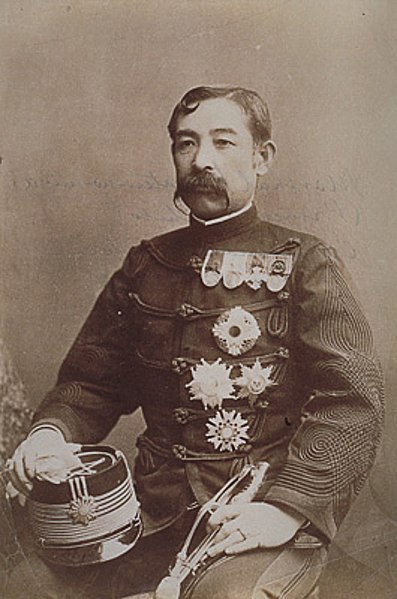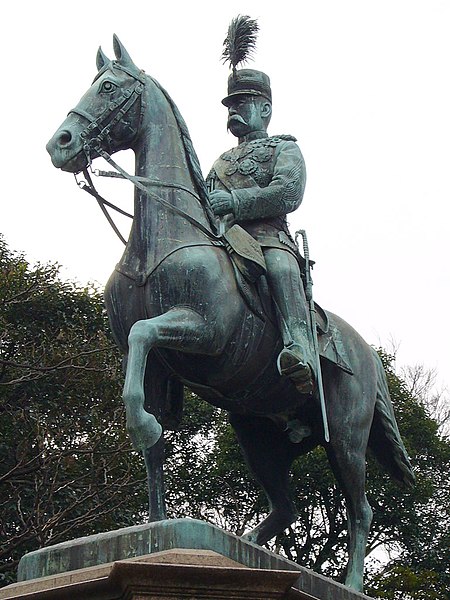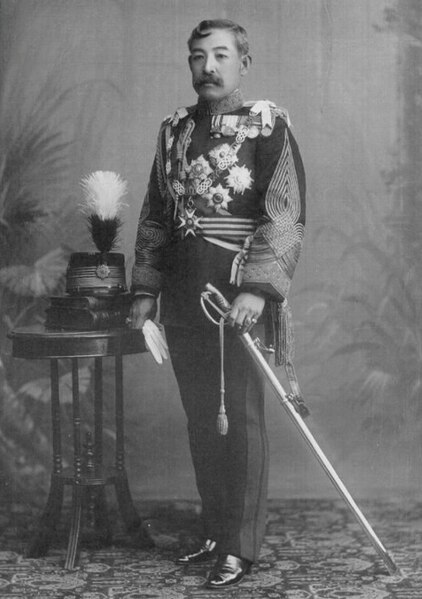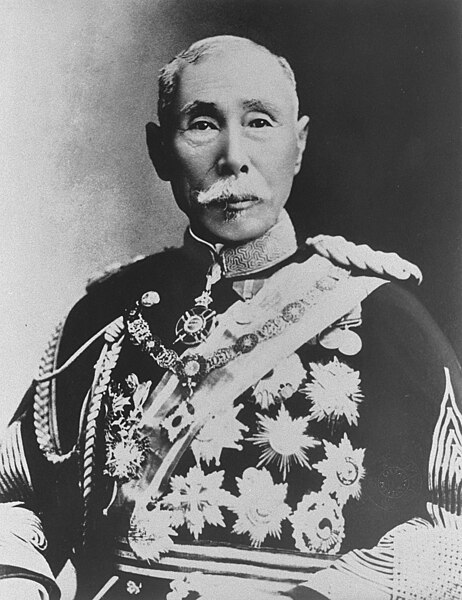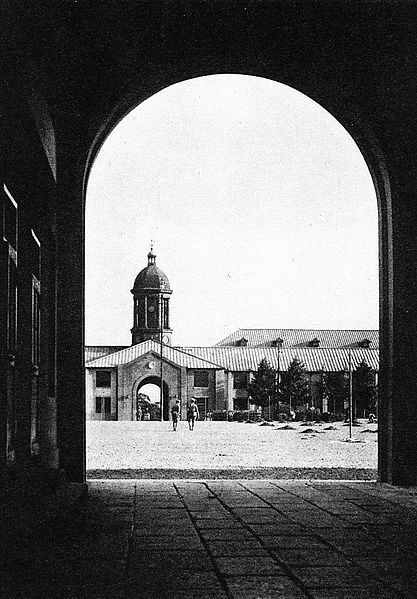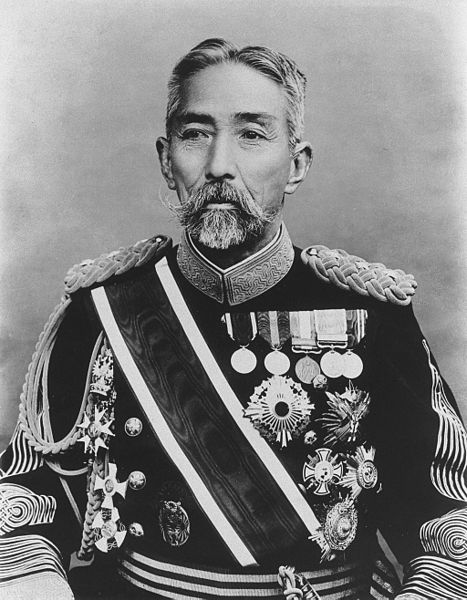Prince Komatsu Akihito was a Japanese career officer in the Imperial Japanese Army, who was a member of the Fushimi-no-miya, one of the shinnōke branches of the Imperial Family of Japan, which were eligible to succeed to the Chrysanthemum Throne.
Prince Komatsu Akihito
Statue of Prince Komatsu Akihito in Ueno Park.
Prince Yoshiaki in England
Prince Komatsu Akihito
The Imperial Japanese Army (IJA) was the principal ground force of the Empire of Japan. Forming one of the military branches of the Imperial Japanese Armed Forces (IJAF), it was controlled by the Imperial Japanese Army General Staff Office and the Army Ministry, both of which were nominally subordinate to the Emperor of Japan, the supreme commander of IJAF. During the 20th century, an Inspectorate General of Aviation became the third agency with oversight of the IJA. At its height, the IJA was one of the most influential factions in the politics of Japan.
Prince Aritomo Yamagata, a field marshal in the Imperial Japanese Army and twice Prime Minister of Japan. He was one of the main architects of the military foundations of early modern Japan. Yamagata Aritomo can be seen as the father of Japanese militarism.
Barrack of the Imperial Guard, circa 1940
Marquis Nozu Michitsura, a field marshal in the early Imperial Japanese Army. He was appointed as chief of staff of the Imperial Guard (Japan) in 1874.
Marquis Jutoku Saigo, a general in the early Imperial Japanese Army. He is the nephew of Saigō Takamori, the leader of Satsuma Rebellion of 1877. Many of the rebels were incorporated into the Imperial Army after the failure of the armed uprising.

